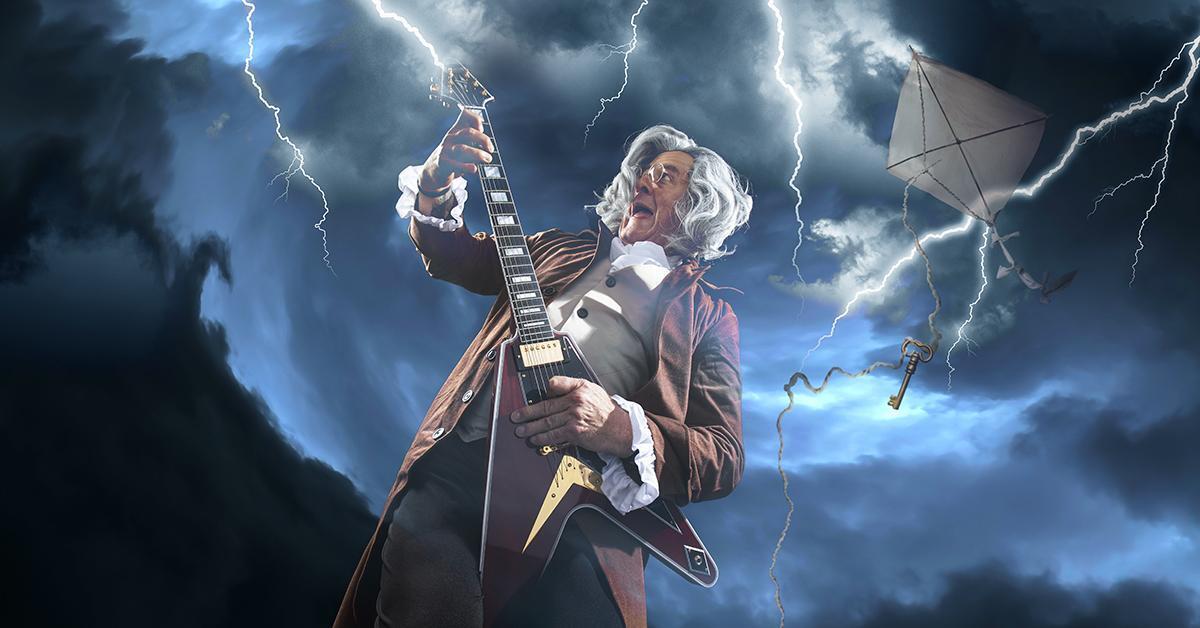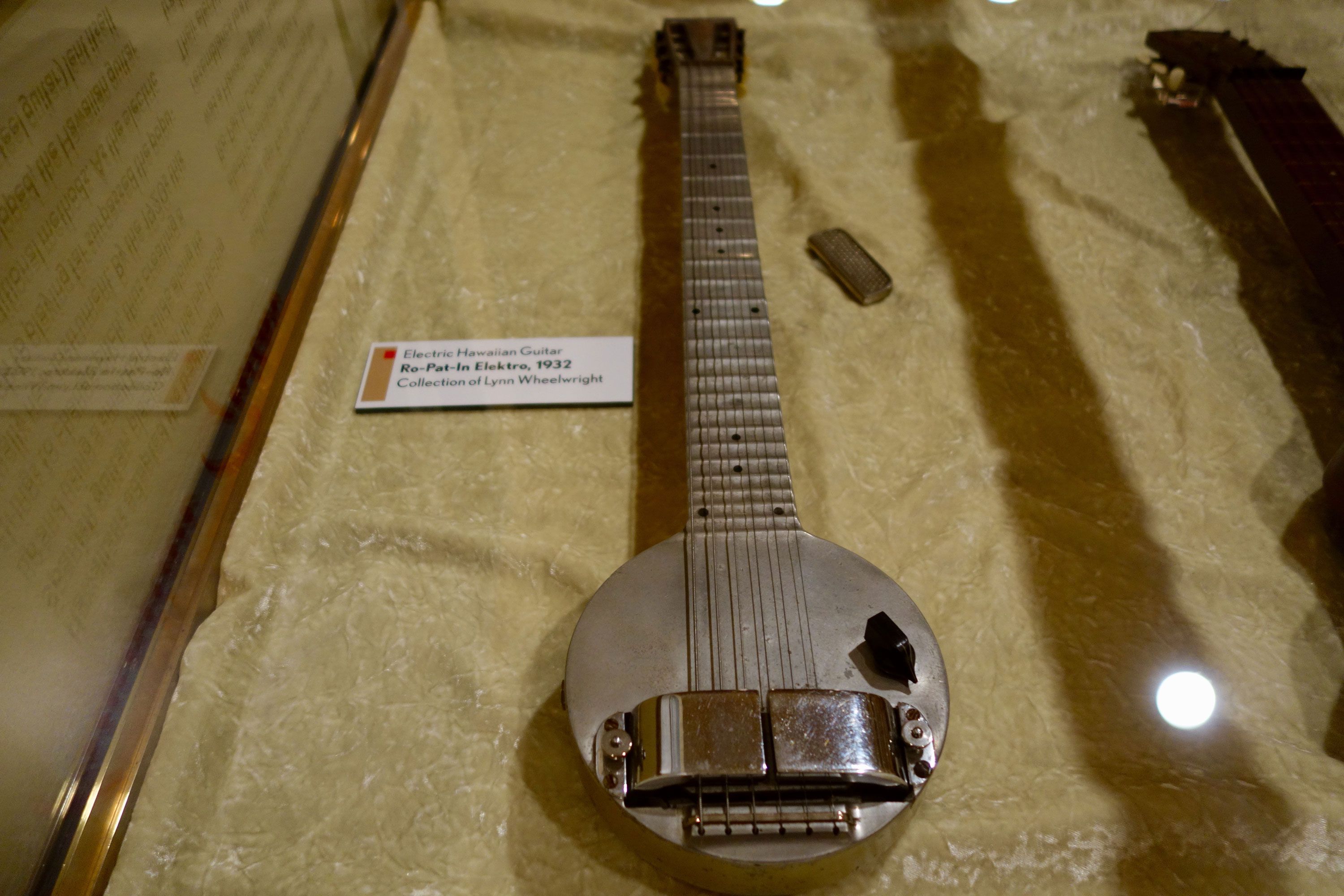The electric guitar originates from the United States. It was developed in the 1930s, thanks to the efforts of inventors like George Beauchamp and Adolph Rickenbacker.
The electric guitar revolutionized music, creating a new sound that became integral to various genres, particularly rock and roll. Its invention allowed guitarists to amplify their sound, leading to new musical styles and techniques. The electric guitar has since become a symbol of popular music, embraced by musicians worldwide for its versatility and expressive capabilities.
With a rich history, it continues to evolve through technological advancements and innovative designs, shaping the sounds of contemporary music and influencing countless artists and genres.

Credit: www.sweetwater.com
The Early Beginnings Of The Electric Guitar
The origins of the electric guitar sketch a fascinating trail back to the early 20th century, an era where the rush of jazz and big bands filled the air, and the need to amplify sound became a pivotal concern for musicians. The Early Beginnings of the Electric Guitar rest in the quest to be heard over the brassy roars of horn sections and the rhythmic thumps of percussions. Ingenious inventors and musicians began experimenting with ways to electrify the traditional guitar, setting the stage for an evolution that would forever change the landscape of music.
The Quest For Amplification In The Early 20th Century
In the roaring ’20s and ’30s, the struggle to project sound escalated as guitarists found themselves overshadowed by their louder bandmates. The audacious desire to amplify the guitar spurred numerous innovators into action. They tinkered with electromagnetic pickups capable of converting string vibrations into electrical signals, which could then be made louder through speakers. This pursuit was not merely about volume, but about bringing a new voice to the guitar, capable of cutting through the sonic excitement of the jazz age.
Pioneers Of The Electric Guitar: Rickenbacker, Gibson, And Fender
The electric guitar’s legacy is punctuated by the names of trailblazers such as Rickenbacker, Gibson, and Fender. These individuals and their companies embraced the challenge of electronic amplification. In 1931, Rickenbacker unveiled the “Frying Pan,” the first electric lap steel guitar, employing a novel pickup design. George Beauchamp, a founder of the company, is often credited with this initial breakthrough. Gibson followed in the 1930s, advancing the technology further, while Leo Fender refined the concept in the 1940s and 1950s, introducing iconic designs that remain influential to this day.
The First Electric Guitars: The Frying Pan And Other Prototypes
The “Frying Pan” irrefutably marked the inception of the electric guitar. Its unusual nickname derived from its circular body and long neck, resembling a kitchen utensil. Built by Rickenbacker in 1931, this historic model featured an electromagnetic pickup that transduced the steel strings’ vibrations into electric signals. The prototype for this design was wrought from assorted parts, signifying a collaborative innovation between Beauchamp and Adolph Rickenbacker. This model laid the foundation for subsequent electric guitars, influencing the shape and sound of modern instruments.

Credit: www.popularmechanics.com
Technological Advancements And Electric Guitar Evolution
The electric guitar, an icon of modern music, owes its existence to a symphony of technological advancements. From the first twinkling of amplified sound to the solid-body designs that revolutionize the music industry, the evolution of the electric guitar is a tale of innovation, need, and the relentless pursuit of sound quality. Let’s delve into the key breakthroughs that shaped this beloved instrument.
Early Innovations: Magnetic Pickups And Amplifiers
The electric guitar’s journey began with ingenuity in magnetic pickups and amplification. In the 1920s and 1930s, visionary inventors saw the necessity for guitars to be heard amidst the roaring horns and percussion of big bands. This period witnessed the birth of:
- Magnetic Pickups: These transformed string vibrations into electrical signals.
- Tube Amplifiers: They boosted weak signals into powerful sonic waves.
Players quickly embraced the revolutionary electro-magnetic pickups, favoring their ability to project clear tones across dance halls and auditoriums.
The Solid-body Revolution: From Les Paul To Stratocaster
The transition from hollow-body to solid-body instruments marked a pivotal turn in electric guitar history. Renowned pioneers like Les Paul played a crucial role in advocating for solid-body guitars, leading to the development of:
- Gibson’s first solid-body electric guitar, credited to Les Paul.
- Fender’s Stratocaster, with its contoured design for player comfort and enhanced tonal options.
Strats and Les Pauls became fixtures on the rock ‘n’ roll stage, adored for their sustain, feedback resistance, and aesthetic appeal.
The Impact Of Wwii On Electric Guitar Materials And Production
World War II had an unexpected effect on electric guitar production. With wartime rationing imposing restrictions on metal use, manufacturers sought alternative materials. This led to:
- Increased utilization of wood and plastic for parts traditionally made of metal.
- Innovative approaches to construction, which laid groundwork for guitars built to endure the rigors of touring.
- The introduction of new plastics for pickguards and binding, impacting the visual style of guitars.
Surprisingly, the material shortages contributed to resilient designs and versatility that shaped the electric guitar as an instrument ready for the spotlight in post-war music scenes.
The Electric Guitar’s Cultural Impact And Legacy
The electric guitar, more than just an instrument, represents a pivotal shift in musical history. Its invention not only transformed the sound of music but also the cultural landscape that surrounded it. It became a symbol of rebellion, innovation, and artistic expression that has continued to resonate through generations.
Icons Of Rock And The Solidification Of The Electric Guitar’s Popularity
Rock icons wielded the electric guitar like a sword, cutting through cultural norms and setting the stage for a new era of music. Legends like Jim Hendrix, Eric Clapton, and Jimmy Page didn’t just play music; they channeled the spirit of the times through their electrifying riffs and solos, making the guitar an extension of their own personas.
- Beatlemania: The Beatles helped skyrocket the popularity of the electric guitar to new dimensions as they took the world by storm.
- Woodstock and the ’60s: A seminal moment for the electric guitar, solidifying its place in the pantheon of cultural revolution.
- MTV Era: With the advent of music videos, the electric guitar became a visual as well as an auditory icon.
The Electric Guitar In Jazz, Blues, And Beyond
While rock might be synonymous with the electric guitar, its influence extends far beyond. Jazz virtuosos like Charlie Christian revolutionized the genre with their electric guitar performances, and blues musicians such as B.B. King infused soul and depth into the strings of their beloved instruments. The electric guitar’s versatility made it a staple in genres like R&B, funk, and even country, showcasing its ability to cross boundaries and unite various musical expressions.
| Genre | Artist | Impact |
|---|---|---|
| Jazz | Wes Montgomery | Complex harmonies and octaves |
| Blues | Stevie Ray Vaughan | Revival of blues in the ’80s |
From Niche Instrument To Mainstream Phenomenon: How The Electric Guitar Shaped Music
Initially perceived as a tool for jazz and blues, the electric guitar soon became the backbone of modern music. Rock ‘n’ roll soared on its strings, and the counterculture movements found their voice through its magnetic appeal. Its impact wasn’t limited to an auditory experience; it altered fashion, attitude, and performance art. The electric guitar became a symbol for youth, freedom, and a challenge to the status quo, ultimately cementing itself as a cultural icon that transcended the realms of music.
- Cultural Revolution: The electric guitar became the voice of a generation demanding change.
- Technological Advancements: Innovations in guitar manufacturing and effects pedals broadened the possible soundscape, unleashing creativity.
- Global Influence: Beyond the Western world, the electric guitar inspired global sounds, fusing traditional music with new techniques.

Credit: en.wikipedia.org
How Did the Evolution of the Electric Guitar Influence Its Origins?
The evolution of the electric guitar dramatically transformed music in the 20th century. This innovative instrument provided musicians with new sounds and styles, paving the way for genres like rock, jazz, and blues. Its technological advancements allowed for increased volume and versatility, shaping the musical landscape forever.
Frequently Asked Questions Of Where Does The Electric Guitar Originate From
Where Did The Electric Guitar Originate From?
The electric guitar originated in the United States in the 1930s. Innovators like George Beauchamp and Adolph Rickenbacker played key roles in its development.
Where Is The Guitar Originally From?
The guitar’s origins trace back to early instruments in ancient Mesopotamia and Persia, evolving through Spain’s medieval period.
What State Was The Electric Guitar Made?
The electric guitar was first made in the United States.
Who Invented Electric Guitar In 1929?
The electric guitar was invented in 1929 by George Beauchamp. He created the first functional electric guitar, known as the “Frying Pan. “
Conclusion
The electric guitar has a fascinating origin story, rooted deeply in the quest for volume and expression. From its early days with Rickenbacker to Les Paul’s pivotal role, this instrument’s journey has shaped modern music. As you strum the strings of your own electric guitar, remember the innovation and passion that brought it to your hands.
Rock on and keep the legacy alive.
{ “@context”: “https://schema.org”, “@type”: “FAQPage”, “mainEntity”: [ { “@type”: “Question”, “name”: “Where did the electric guitar originate from?”, “acceptedAnswer”: { “@type”: “Answer”, “text”: “The electric guitar originated in the United States in the 1930s. Innovators like George Beauchamp and Adolph Rickenbacker played key roles in its development.” } } , { “@type”: “Question”, “name”: “Where is the guitar originally from?”, “acceptedAnswer”: { “@type”: “Answer”, “text”: “The guitar’s origins trace back to early instruments in ancient Mesopotamia and Persia, evolving through Spain’s medieval period.” } } , { “@type”: “Question”, “name”: “What state was the electric guitar made?”, “acceptedAnswer”: { “@type”: “Answer”, “text”: “The electric guitar was first made in the United States.” } } , { “@type”: “Question”, “name”: “Who invented electric guitar in 1929?”, “acceptedAnswer”: { “@type”: “Answer”, “text”: “The electric guitar was invented in 1929 by George Beauchamp. He created the first functional electric guitar, known as the \”Frying Pan.\”” } } ] }
